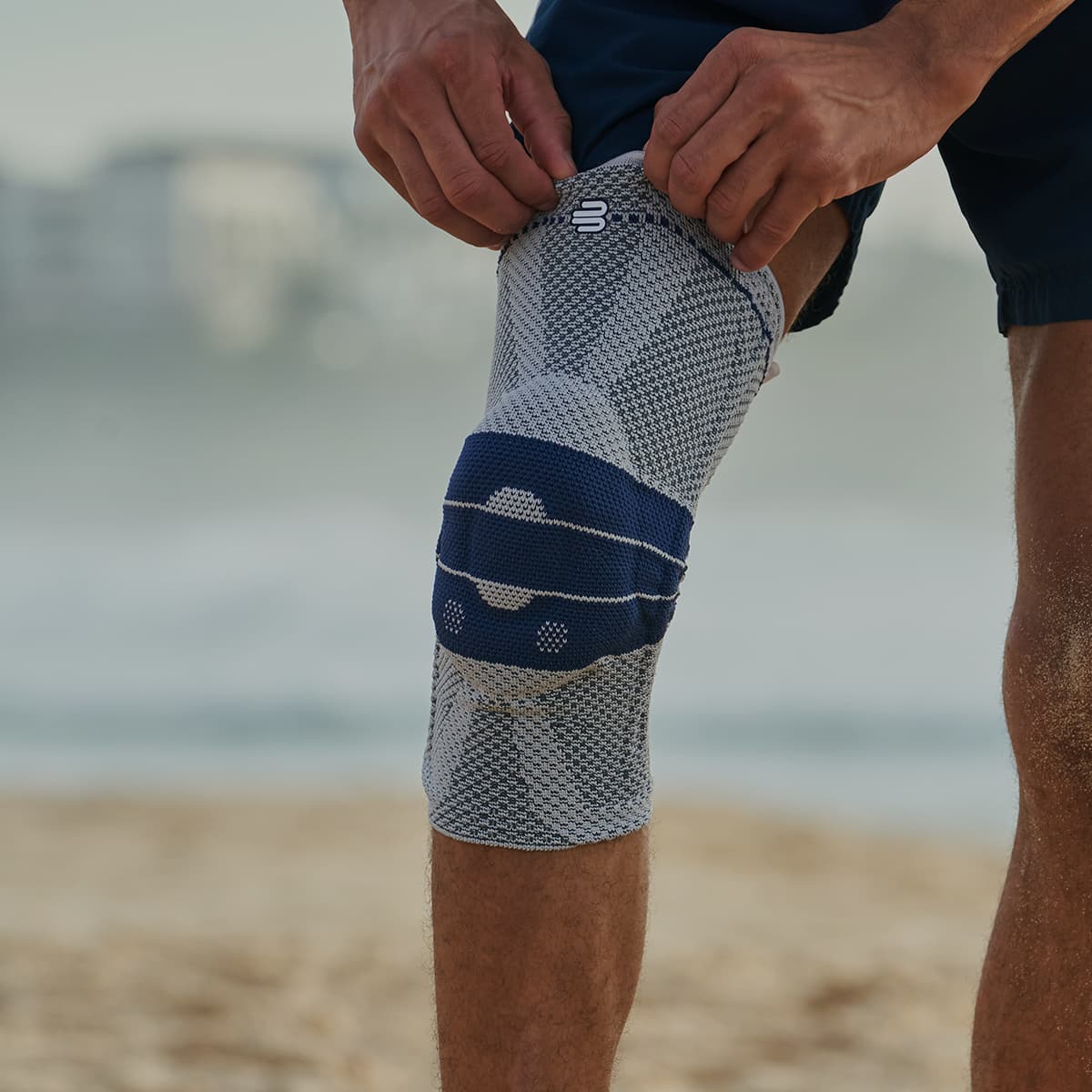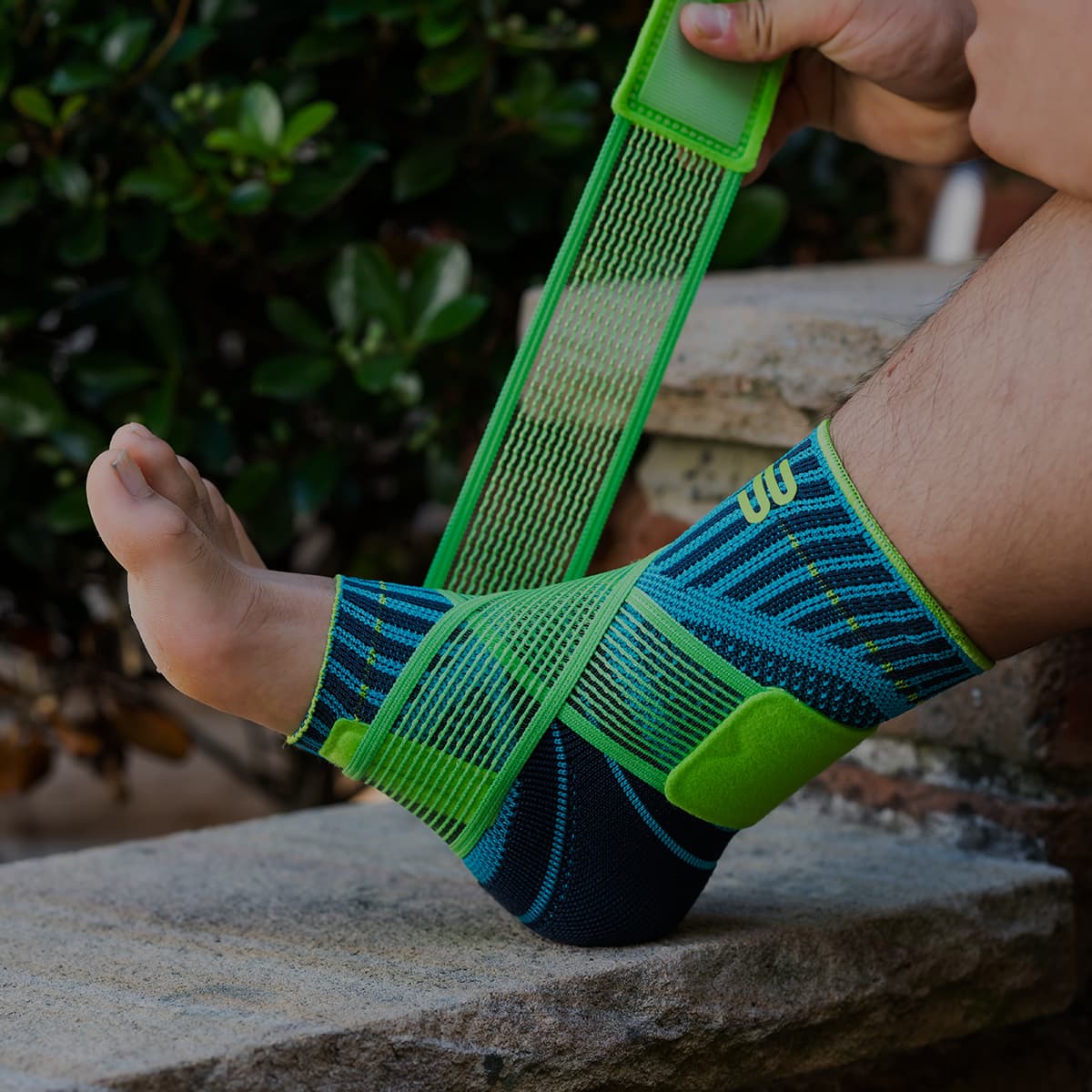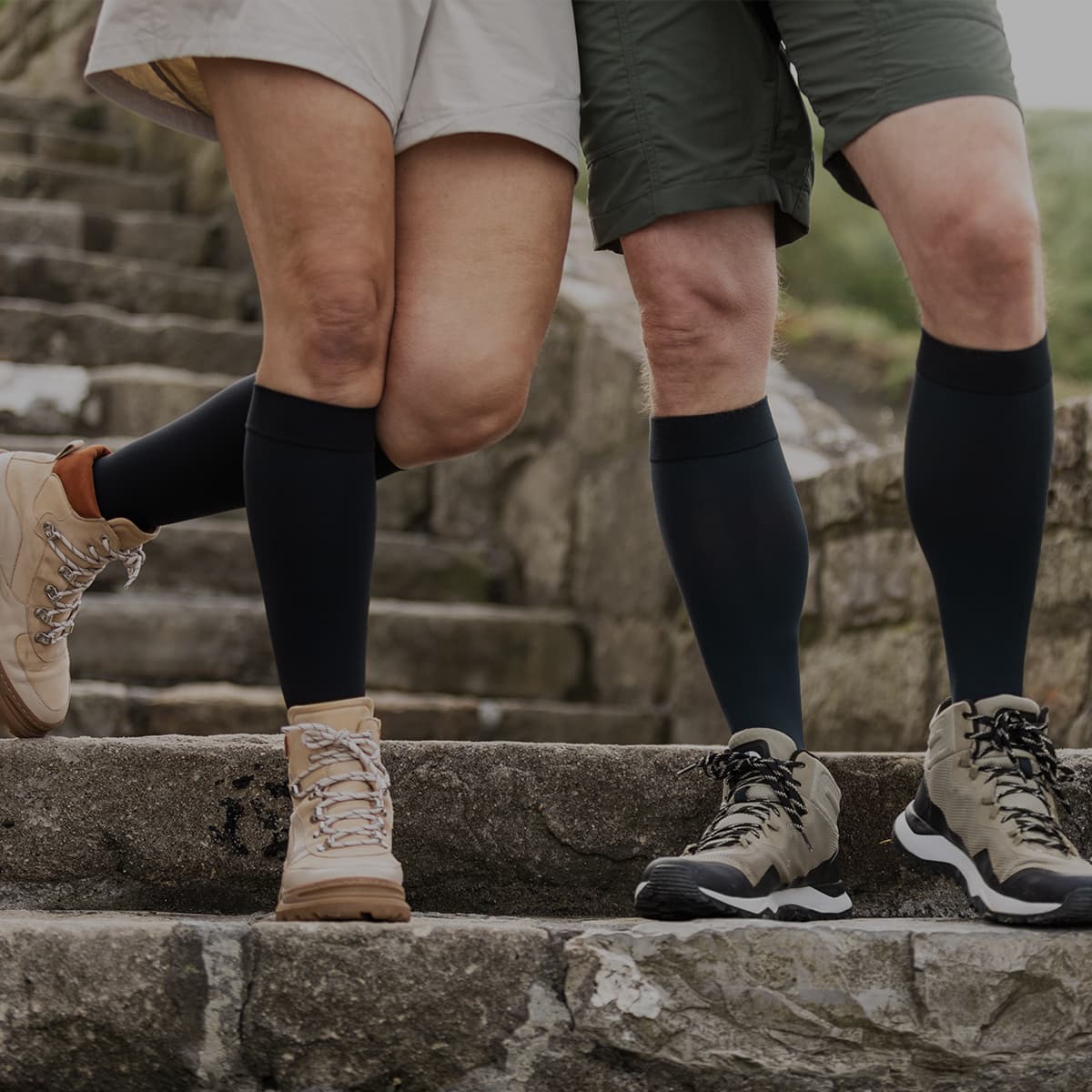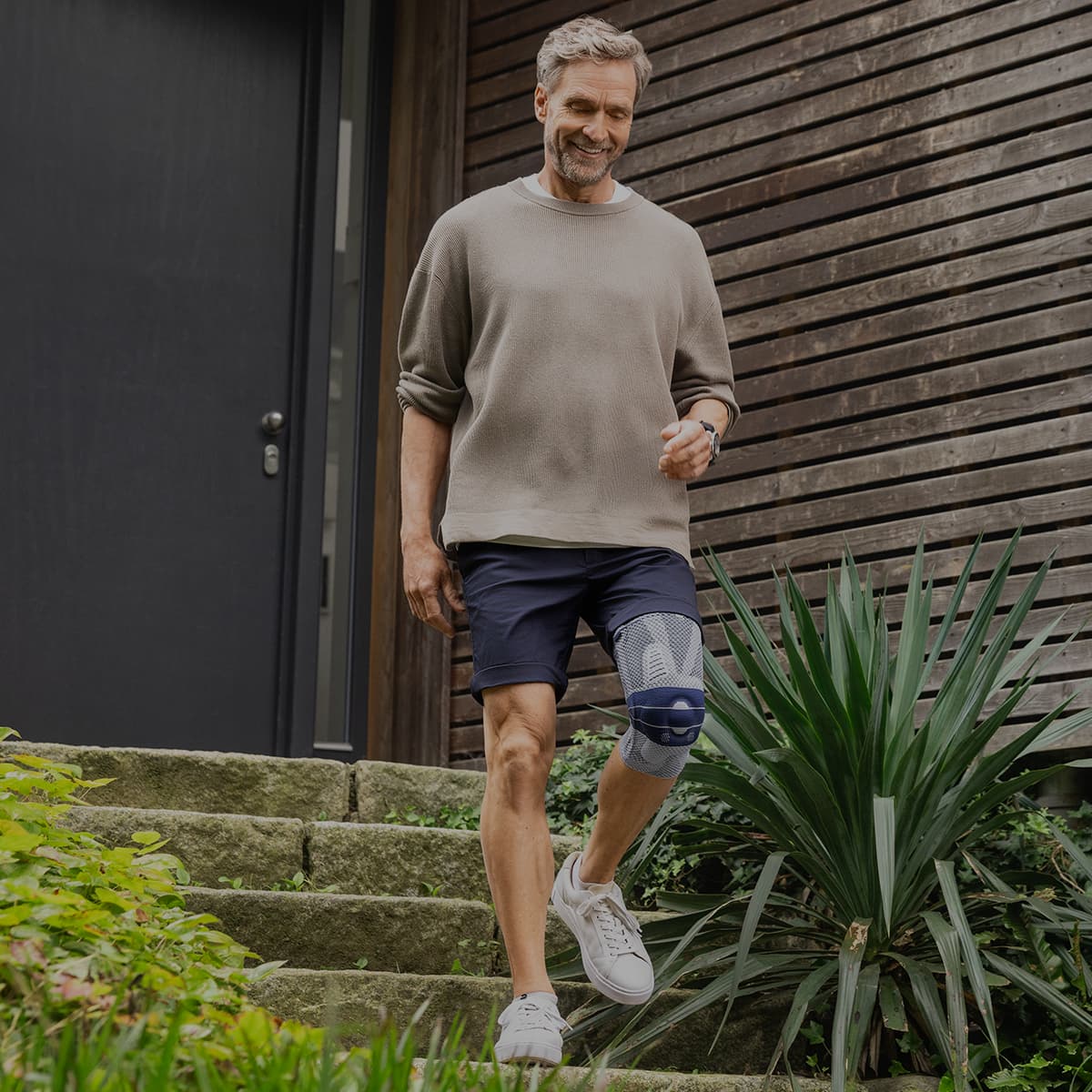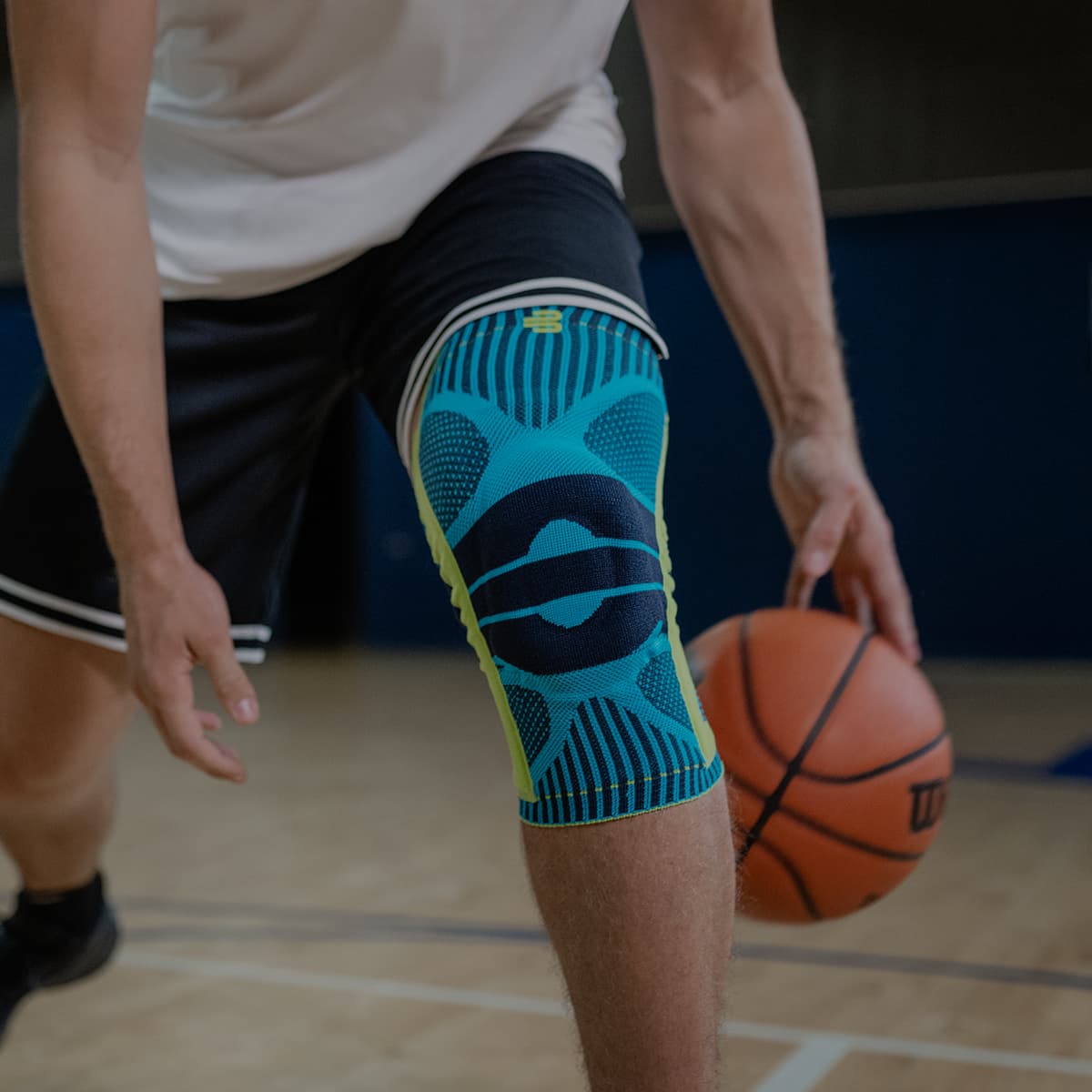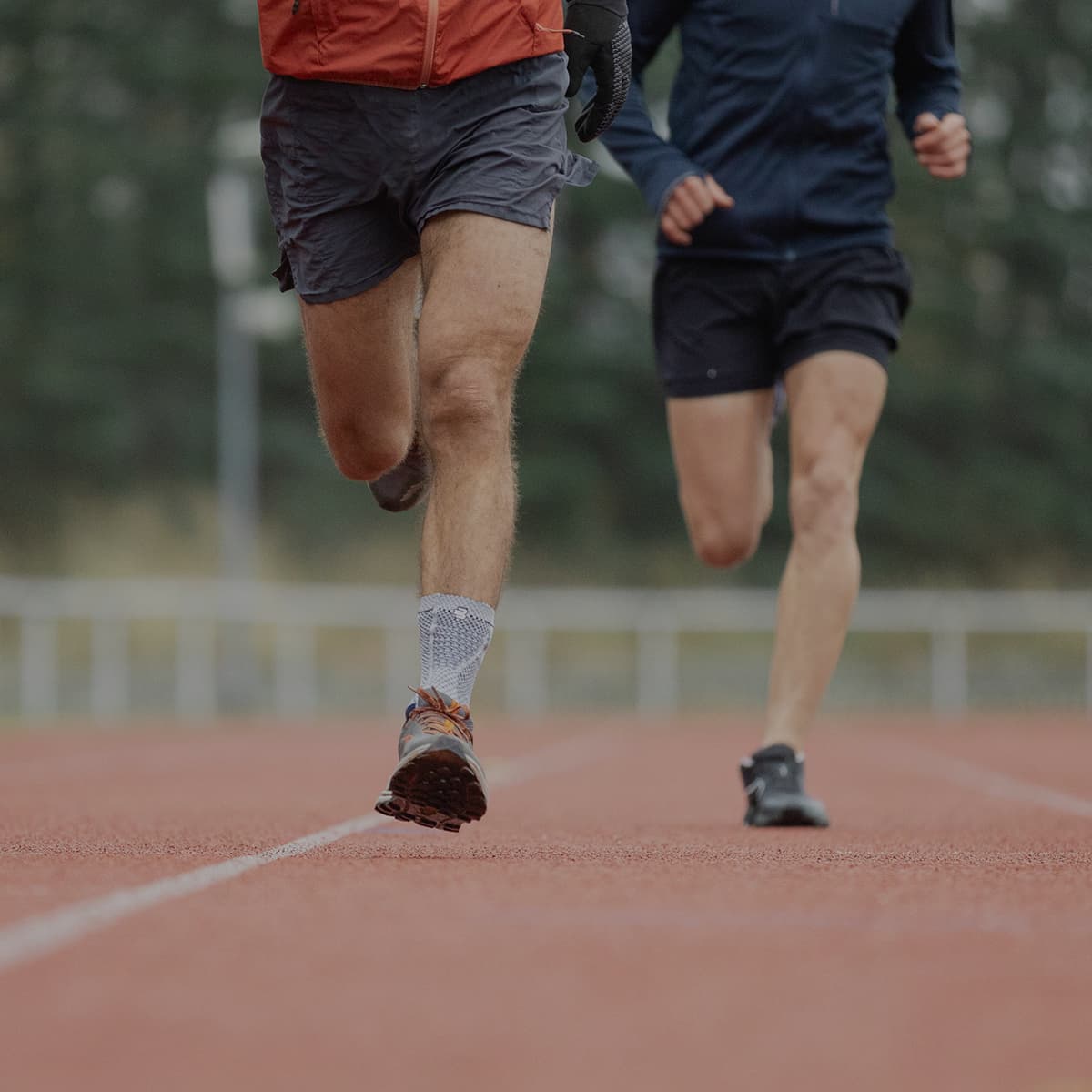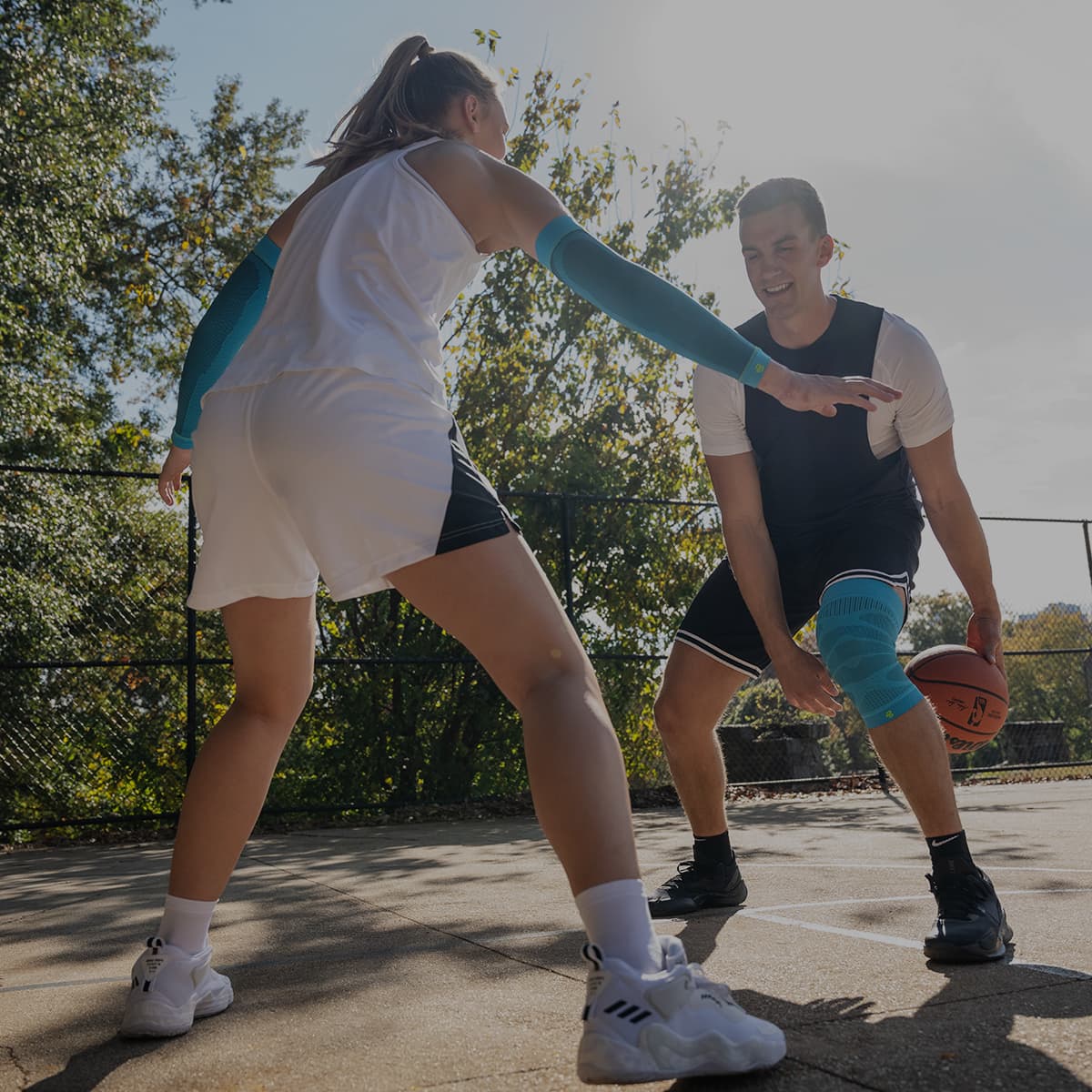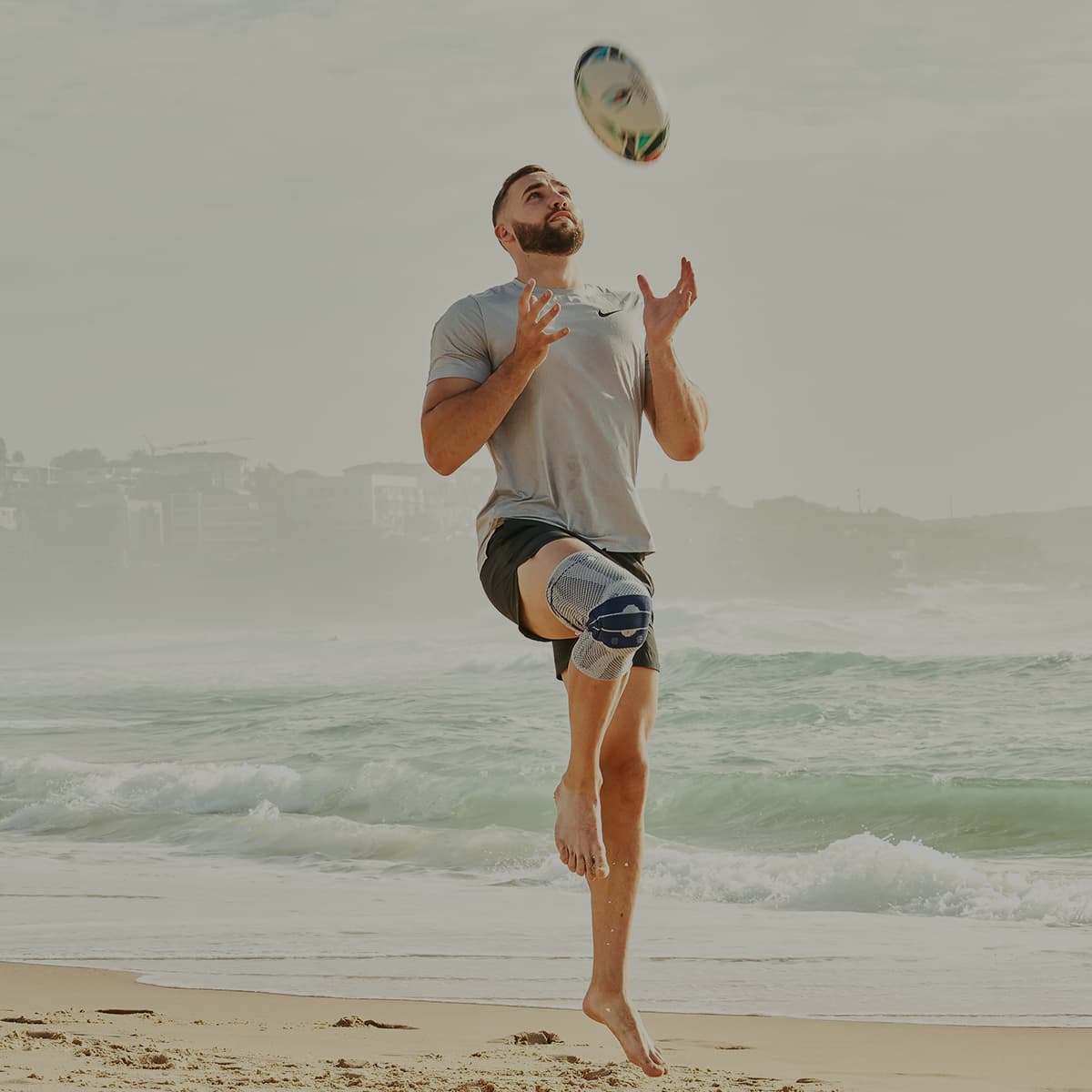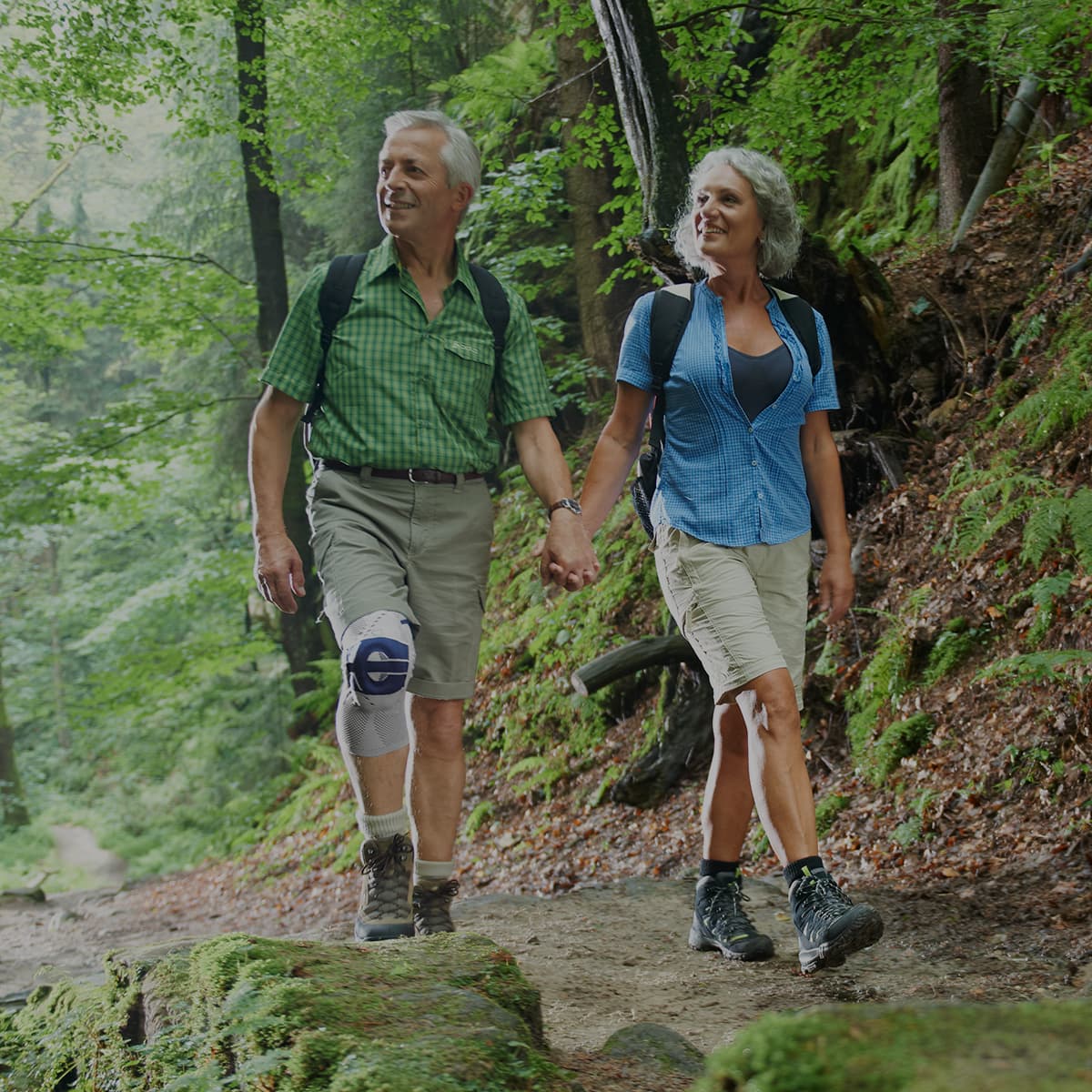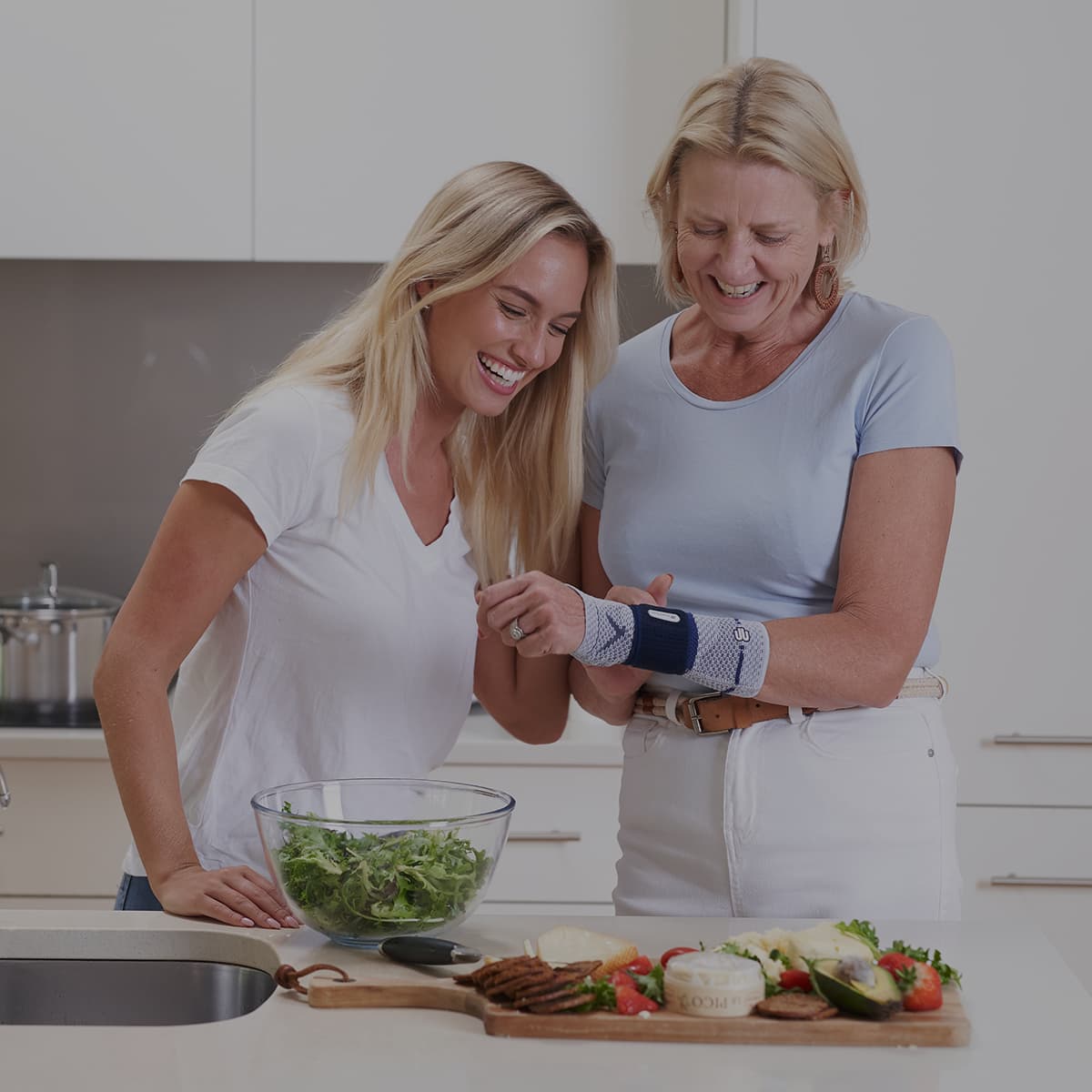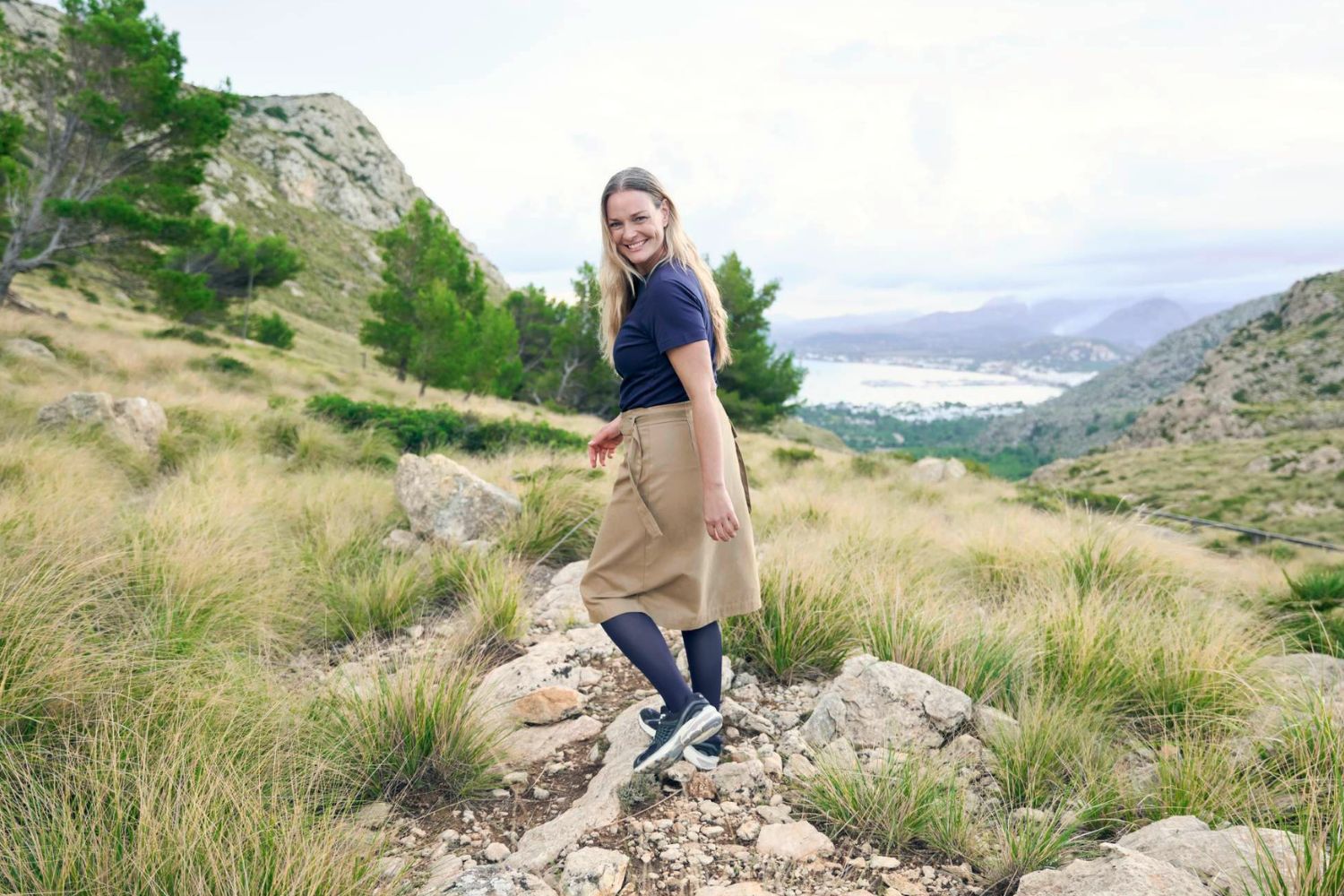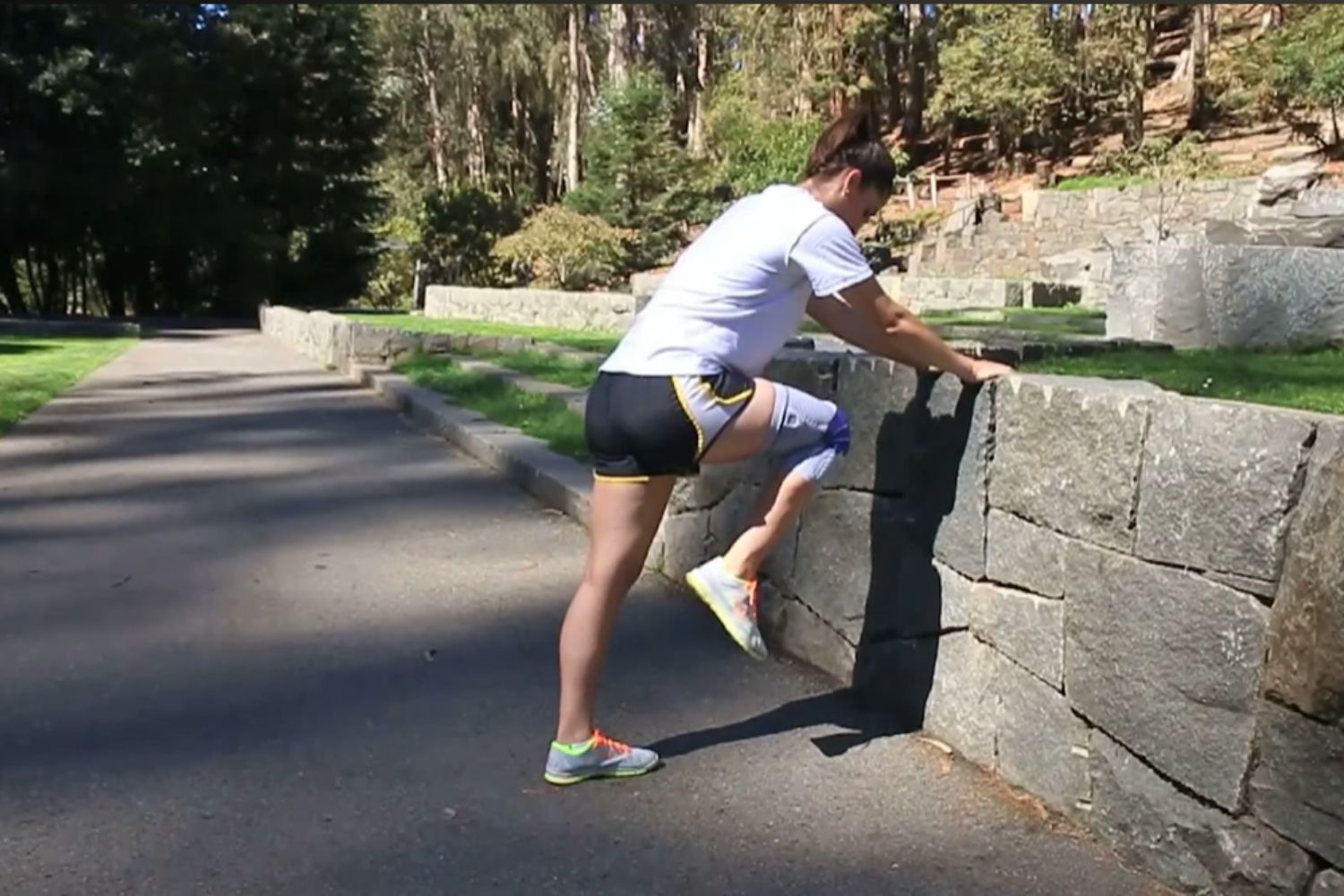Pain and injury can make it difficult to stay active. Even though the medical research says physical activity is great for conditions like varicose veins and lymphoedema, pain, swelling, and limb fatigue can make staying active challenging. Luckily, medical-grade knit can help you find relief and get moving again. Here’s how.
Anatomy of varicose veins and lymphoedema
Lymphoedema is a condition affecting the lymph nodes, which house immune cells and drain the protein-rich lymph fluid out of your body. Certain parasites, tumour growth, and radiation treatment for cancer can impair lymph node function. When a node stops functioning correctly, lymph fluid builds up in its tissue network, leading to swelling. Pain, heaviness, tightness, and restricted range of motion are common symptoms, making staying active difficult.
Varicose veins stem from faulty valves that can no longer close properly, letting blood slip backward and pool in the vein. The condition is characterised by bulging, green veins that take on a twisted, rope-like appearance. While the condition is often asymptomatic in its initial stages, leaving the veins unmanaged or untreated can cause an array of symptoms, including:
- Itching
- Pain
- Swelling
- Limb restlessness
- Limb fatigue
- Burning sensations
These symptoms develop due to impaired circulation through the vein, which restricts oxygen and nutrient delivery to surrounding tissues. The expanded vein may also start irritating the surrounding nerves.
The benefits of compression for lymphatic disorders
Your lymphatic system relies on muscle contractions to pump fluid up your limbs and to where it’s supposed to be. Graduated compression garments stimulate this effect, mobilising the stagnant fluid and activating the muscles to pump it back into the lymphatic system for drainage.
Compression (class 1) used in the initial stage of the condition can delay its progression.
Circular compression knit (as found in our Impuls garments) is best used in the first or second stage of the condition, when the affected area hasn’t swollen much. Consistent wear can help delay the progression of the condition.
You can also wear compression garments in the maintenance stage, after your clinician has taken steps to reduce your swelling through manual lymph drainage or intermittent pneumatic compression. Flat knit garments like those in our Curaflow range are ideal here, as their unique structure lets them prevent further swelling.
Exercising with lymphoedema
Your stockings will be great for gentle to moderate-intensity physical activities like walking, yoga, or cycling. These exercises are great for contracting the muscles and stimulating lymph flow, which compression will only improve. These exercises also provide the cardiovascular and flexibility training necessary for improved muscle function and ROM.

VenoTrain Impuls Compression Garments
ENQUIRE NOW
The benefits of compression for varicose veins and venous insufficiency
Much like your lymphatic system, the vascular system relies on the muscles to pump blood to the heart. This is especially true of your legs, as the veins there have to work hard against gravity to do their job.
When varicose veins or CVI develop, blood begins to pool in the expanded vessel, making it difficult to pump upwards. However, graduated compression squeezes the blood out of congested vessels and stimulates the pumping action of the muscles. One study found that wearing class 1 (18-21 mmHg) stockings for 1 week helped participants reduce pain and swelling. Compression garments can also delay the progression of insufficiency or varicose veins.
Not to mention, you can (and should) wear compression at any stage, from prevention to post-treatment.
VenoTrain Micro Compression Stockings
It’s important to note that although compression can relieve symptoms in most people, medical intervention is the only way to treat varicose veins.
Exercising with varicose veins
When exercising with varicose veins, it’s best to stick with lower-impact, medium-intensity activities. Walking, yoga, swimming, and cycling are great options, and compression garments can increase their circulation and muscle activation benefits.
As with lymphoedema, light resistance exercises like glute bridges, calf raises, and bodyweight squats can improve muscle tone and function. If you want to do higher-intensity activities, you should consult your doctor and pay attention to how your veins feel. You can also add sports compression sleeves to assist your veins.
How to wear your compression socks safely
- Sizing: Compression comes in a wide variety of sizes for a reason—your stocking is meant to provide the optimal amount of compression for fluid drainage without slipping or restricting blood flow. Additionally, as lymphoedema can drastically alter the size of the affected area, it’s best to start wearing it when swelling is only mild or after you reduce swelling through manual therapy.
- Skin care: In certain cases, compression may do more harm than good. For example, you shouldn’t wear the same pair of stockings from stage 1 to 2 of lymphoedema, as the difference in limb size can make the stockings restrict lymph flow instead of improving it. You should also avoid compression stockings if your skin layer is compromised. Poor circulation and chronic swelling can make the skin more susceptible to breakage and infection. Putting on and wearing tight stockings can make matters worse. VenoTrain Cocoon stockings can help mitigate some of this risk for vascular patients. However, as they are knee-high, they won’t be suitable for lymphoedema.
- Compression class: compression garments come in 4 compression classes. Generally, class one is best for prevention and early-stage disorders. Stockings that are class 2-4 are best for later and advanced stages. Speak with your clinician to see which would be best for you.
To sum up
Exercise is a great way to support the lymphatic and venous systems. However, due to pain, swelling, fatigue, or all of the above, lymphoedema and vein disorders can make it challenging to stay active. Fortunately, medical-grade compression can relieve these symptoms and get you moving again.

